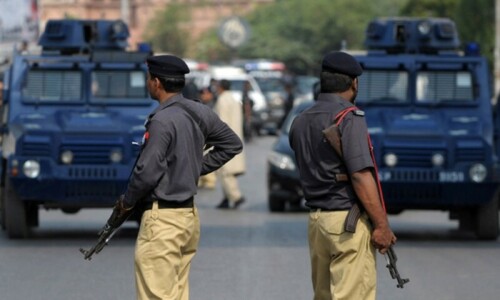
Pakistan’s economy will grow by 5.8 per cent this year, highest in 13 years when it grew by 7.2on in 2004/2005, in spite of strong headwinds facing it.
Strong domestic demand on the back of increased public and private consumption, an improved security climate, and better energy supplies to the industry and massive Chinese investment in power and transport infrastructure under the multi-billion-dollar China Pakistan Economic Corridor (CPEC) initiative have been driving economic growth for the last five years.
The economy has actually been expanding ever since financial year 2013/2014, registering an average annual gross domestic product (GDP) growth rate of 4.8pc in the last five years compared with an average growth of 2.8pc between 2008 and 2013.
Many insist that the economy will continue on the growth trajectory for some years now despite multiple challenges like widening current account and fiscal deficits and a spiking foreign debt burden. But will it? There’s no perfect answer for this.
“I think the economy will continue its growth momentum next year. The massive tax cuts allowed to individuals and companies in the just announced budget will increase aggregate demand and boost new investment by large corporations in capacity expansion and Greenfield projects, thus propelling a faster growth in 2018/2019 and beyond.
“Every decision entails certain trade-offs; we chose to grow the economy” says Ahsan Iqbal
“Moreover, the measures taken by the government to make it difficult to park illegal gains in land and property should divert the money into productive sectors and generate growth,” noted Amyn Malik, partner at KPMG Taseer Hadi & Co.
He conceded that the external account vulnerabilities could drag down the economy.
But added: “The tax incentives given to legalise and bring back home tax-evaded money stashed outside Pakistan, growing interest of foreign investors, including Chinese and Russians, in this market of 207m people, and expected increase in exports on a weakening rupee will hopefully somewhat take care our of external account problems going forward. So I think our growth momentum will continue for some years to come.”
Others however appear somewhat sceptical about the quality of growth and its sustainability in the medium term. Ali Asghar Poonawala, a financial analyst at AKD Securities, felt that the economy will continue on the present growth trajectory. “But the problem is that the economy is growing because of rising consumption and is fuelling imports. This type of growth cannot be sustainable.”
The central bank in its second quarterly report too has expressed concerns over risks to the economy posed by a widening current account deficit.
“Risks to overall macroeconomic stability have increased due to widening imbalances in the country’s balance of payments… the deficit will continue to eat fast the foreign exchange reserves and keep (the) economic managers engaged in making short-term international borrowing.”
The bank’s dollar reserves have already fallen to less than two-and-a-half months of the country’s import bill because of the burden of financing the current account owing to the drop in private and official financial inflows and, ‘despite modest recovery in exports, the balance of payments continues to reel under pressure of surging imports’.
The government admits that economic growth notwithstanding, many macroeconomic indicators remain weak.
But planning minister Ahsan Iqbal told a questioner at the news conference called to launch this year’s economic survey that “this was the trade-off the government had to make to achieve higher growth so that the economy can absorb 2m people entering the job market every year. “Every decision entails certain trade-offs; we chose to grow the economy.”
The current account deficit has already increased to $12bn in the first three quarters of the present financial year and is projected to widen to $15bn or above 5pc of GDP at the end of the fiscal. Another bailout from the International Monetary Fund (IMF) appears to be on the horizon in the wake of looming balance-of-payments crisis.
“So far we have sustained this growth momentum through heavy foreign borrowings. But now it appears we will have to knock at the IMF’s doors once again. Once we revert to the Fund for another bailout, we will be doomed for many years.
“That’ll be the end of our growth story that the outgoing Pakistan Muslim League-N government is touting to attract voters,” a Lahore-based economist, who did not want to give his name for personal reasons, argued.
Published in Dawn, The Business and Finance Weekly, April 30th, 2018














































